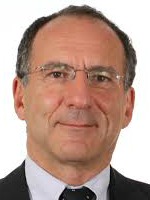 Celyad ($CYAD) has identified a route into the potentially lucrative Chinese market. The cell therapy specialist is set to add Hong Kong to the clinical trial program of its ischemic heart failure treatment, giving its newly recruited partner Medisun data to support an attempt to crack China.
Celyad ($CYAD) has identified a route into the potentially lucrative Chinese market. The cell therapy specialist is set to add Hong Kong to the clinical trial program of its ischemic heart failure treatment, giving its newly recruited partner Medisun data to support an attempt to crack China.
 |
| Celyad CEO Christian Homsy |
Medisun is bankrolling the clinical trial program as part of a licensing agreement it struck with Celyad for C-Cure. The deal sees Medisun hand over $20 million (€17.8 million) upfront, agree to foot the bill for the clinical trials and commit to royalties in profit sharing. Mont-Saint-Guibert, Belgium-based Celyad is in line to pocket up to 30% in royalties and 25% of the profits. The partners are calculating profits by subtracting royalties from total revenues. Last year analysts at Edison tipped C-Cure sales in the U.S. and Europe to top out at €1.9 billion.
If Celyad and Medisun can translate such a performance to China--a big if--the royalties and profit sharing could become a tidy earner for the Belgian biopharma. Whatever happens, Celyad has risked relatively little to gain a shot at the Chinese market while retaining control of the clinical trials that will decide the fate of the initiative. "We are pleased to have this new license agreement in place with our local partner Medisun which gives us full control over clinical developments in these territories, fully funded by our local partner," Celyad CEO Christian Homsy said in a statement.
Celyad is initially focusing the Medisun-financed aspects of its clinical trial program on Hong Kong, but could go on to add sites from its CHART-2 study to the China-oriented initiative. The plan now is to get CHART-2 up and running before the end of 2015, a full year later than Celyad forecasted as recently as November. CHART-2 is the second component of the late-phase trial program of C-Cure. The first, CHART-1, has recruited patients in Europe and Israel. Celyad expects to have the full clinical data set for CHART-1 by the middle of next year.
- read the release